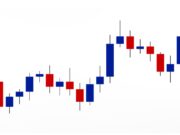Knowing full well that intelligent people read Wall St. Watchdogs, let’s just get this out of the way and trust my lack of presumption. I didn’t always know what a semiconductor was, but it’s been a hell of a pleasure learning about them. Semiconductors, often referred to as chips, transmit electricity more than insulators like glass but less than pure conductors, such as copper or aluminum. Semiconductors are usually made of silicon. They can be set up to change their conductivity and other characteristics to fit the demands of whatever electronic component in which they’re used. “Semis” are used in hundreds of goods, including computers, mobile phones, appliances, gaming gear, and medical devices.
In a fast-moving world, a vital microchip lies at the heart of just about every fantastic piece of technology and invention today. While global supply chains were disrupted, the semiconductor sector thrived in 2020, thanks to the increasing demand for PCs, 5G smartphones, and infrastructure components for supercomputers. Following a 12% drop in 2019, worldwide chip sales climbed by 7.3% to $449.8 billion in 2020. In April 2021, global semiconductor sales increased 21.7% to $41.8 billion, suggesting stable demand.
During the first quarter of 2021, the automotive industry experienced a global chip supply crisis, but the supply of semiconductors for healthcare and technology remained stable. Taiwan Semiconductor Manufacturing Company Limited (TSM) stepped up, for example, and has increased its capital expenditure target for 2021 to $30 billion in response to the shortages. TSM is just one example, however, of a trusty chip stock to consider adding to your investments.
The semiconductor sector has gotten a lot of recent attention on Wall Street. The stocks can tend to get pricy, but, evidently, for good reason. Let’s take a look at just a few of the quickly-growing number of semiconductor stocks that the experts consider smart portfolio picks:
Qualcomm Inc. (QCOM)
Qualcomm (QCOM) is a wireless telecommunications company that designs and manufactures devices. Seven partners established the firm in 1985. It is headquartered in San Diego and employs over 41,000 people in over 170 locations across 40 countries. Steve Mollenkopf is the company’s CEO. He is also a member of the board of directors of the firm. Mollenkopf was the company’s president and chief operating officer before taking over as CEO. He began his career as an engineer and has worked at QCOM in a variety of capacities. He has played a crucial role in the company’s 5G wireless technology development.
QCOM ranked 137th among Fortune’s top 500 businesses in 2019, down four positions from the previous year. The firm is sandwiched between Penske Automotive Group (PAG) and Bristol-Myers Squibb (BMY), a prominent biopharmaceutical company. In QCOM’s third-quarter earnings report, analysts’ projections were relatively easily beaten; EPS (Earnings-per-share) by 14.11% and Revenue by 5.71%. QCOM has a consensus price target of 180.00 among analysts that provide 12-month price forecasts, with a high of 303.71 and a low of 150.00. The median estimate is up 26.41% from its current price. QCOM currently pays a yearly dividend of $2.72 per share, with a dividend yield of 1.83%, and the strong consensus among polled experts is to buy shares in Qualcomm (QCOM).
Lam Research Corporation (LRCX)
Lam Research Corp. manufactures and services semiconductor fabrication equipment for wafer processing. The United States, China, Europe, Japan, Korea, Southeast Asia, and Taiwan are the geographical segments in which it works. Thin-film deposition, plasma etch, photoresist strip, and wafer cleaning are all part of what they offer. David K. Lam started the firm on January 21, 1980, and it is based in Fremont, California.
In February, the company’s Board of Directors recommended a $1.30 quarterly dividend per share of common stock. Its latest quarterly earnings report beat EPS projections by 6.27% and revenue projections by 2.81%. LRCX’s Year-over-Year financials are particularly impressive, reporting current EPS (Earnings-per-share) growth of 6.9%, a revenue increase of 48.5%, a net income gain of 64.3%, with a profit margin of 10.66%. LRCX has a consensus price target of 750.00 among the analysts that provide 12-month price estimates, with a high of 815.00 and a low of 660.00. The median estimate reflects an increase of 28.11% over its current price. Shares in LCRX have been given a long-running buy rating by polled analysts, with no indication of changing anytime soon.
Nvidia Corporation (NVDA)
NVIDIA Corp. is a company that creates computer graphics processors, chipsets, and associated multimedia applications. Graphics Processing Unit (GPU), Tegra Processor, and All Other are the three parts in which it functions. The GPU category includes product names such as GeForce for games, Quadro for designers, Tesla and DGX for AI data scientists and significant data researchers, and GRID for cloud-based visual computing consumers, among others. The Tegra Processor category combines GPUs and multi-core CPUs to power supercomputing in autonomous robotics, drones, automobiles, consoles, mobile games, and entertainment devices. Stock-based compensation expenditure, corporate infrastructure and support expenses, acquisition-related costs, legal settlement costs, and other non-recurring charges are all included in the All Other section. Jen Hsun Huang, Chris A. Malachowsky, and Curtis R. Priem started the firm in January 1993, and it is based in Santa Clara, California.
It’s clear that Nvidia (NVDA) has a lot going on, and the company’s tenacity has caught Wall Street’s attention. Their financials are as solid as they come. While it currently pays a 29 cent annual dividend, its Y/Y numbers are impressive, and it has consistently bested analysts’ expectations with its quarterly earnings reports. NVDA reports again on November 11th, but it boasts $6.8 billion in sales and an adjusted EPS of $1.10 per share for the current quarter. The consensus price target for NVDA from analysts that provide 12-month forecasts is 225.00, with a high of 328.42 and a low of 130.00. The estimate reflects an increase of 1.97% from the current price. The forecasts for NVDA are all strong, and its stock’s buy rating may be even stronger.














